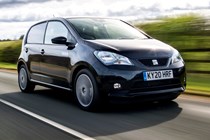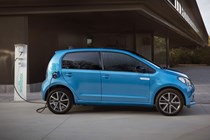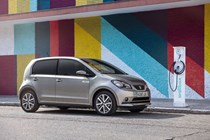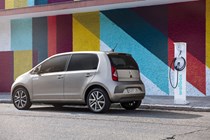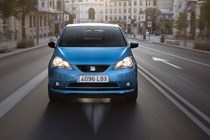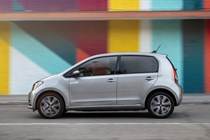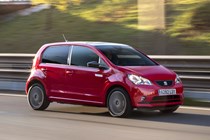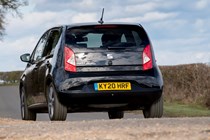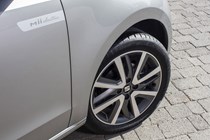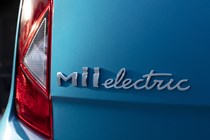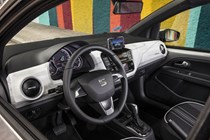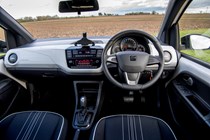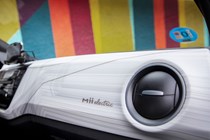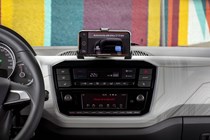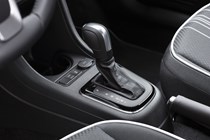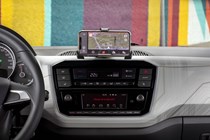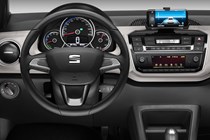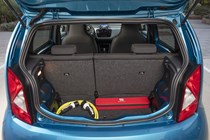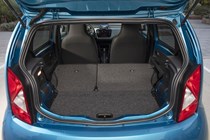
SEAT Mii Electric Hatchback (2019-2021) running costs and reliability

Miles per pound (mpp) ⓘ
| Electric motors, home charging | 12.4 - 12.6 mpp |
|---|---|
| Electric motors, public charging | 6.7 - 6.8 mpp |
Fuel economy ⓘ
| Electric motors | 4.2 - 4.3 miles/kWh |
|---|
- How long does it take to charge?
- What’s the driving range?
- What are the driving and braking modes for?
The Mii Electric produces zero emissions when driving. But it should also improve your running costs, as electric vehicles are typically much cheaper per mile than internal combustion engines. The flipside to this is the potential hassle and inconvenience of keeping it charged up – so here’s all the info you need on Miii Electric driving range and charging times.
Mii Electric driving range
The Mii Electric was tested to WLTP efficiency standards – supposedly more realistic in the real world than the older NEDC test – and has a claimed driving range of 161.5 miles. This lags somewhat behind the Renault Zoe’s 250-mile claim, but for a vehicle of this size and cost really isn’t bad at all.
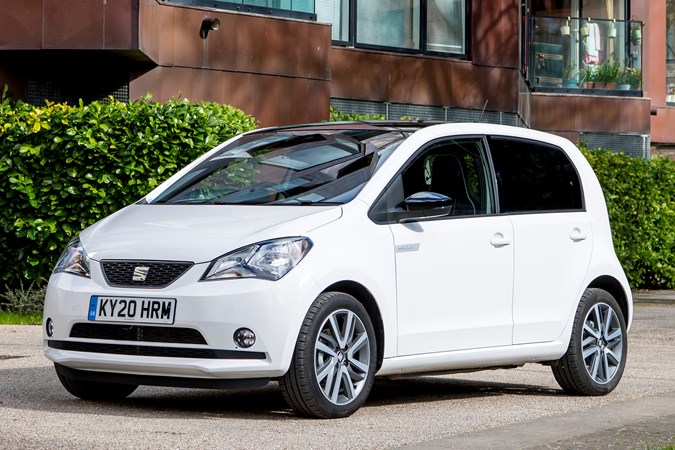
What’s more, SEAT said that in urban driving – which is where the Mii Electric is predicted to find the most use – the claimed range goes up to 223 miles. This is thanks to way electric motors recover energy when they slow down, as well as the lower speeds in towns and cities.
Three driving modes and four recuperation settings
Helping to maximise range, the Mii Electric has three driving modes: Normal, Eco and Eco+. As you can probably guess, the two eco settings reduce motor performance to make the batteries last longer – Eco also automatically turns down the air-conditioning, while Eco+ switches it off altogether.
Eco+ is also the mode that comes on automatically when the battery level is getting really low, in an effort to help you make it to that next charging point.
Since electric motors can be used as generators to recover energy as they slow down, this process can also be used to help slow the entire car – and to enable you to make the most of this, there are four recuperation settings.
These are accessed via the gear selector rather than paddles on the steering wheel (as happens in some more expensive electrified vehicles, such as the Volkswagen e-Golf and Mitsubishi Outlander PHEV), but simply put, the higher the mode, the faster the Mii Electric slows down when you lift your foot off the accelerator.

In the most powerful setting – which is actually labelled B and individually marked on the gear lever – there is enough braking force that you won’t need the regular friction brakes much at all, if you drive appropriately. The greater the braking force, the more energy is recuperated. But we suspect most owners will simply find a mode that’s most comfortable for them and leave it at that.
Mii Electric charging time
The Mii Electric has a 36.8kWh battery pack (confusingly sometimes referred to as 32.3kWh; it’s the same battery pack) and the charging time for refilling this varies with the type of charger you have access to, which is understandable.
A full charge on an ordinary three-pin plug (you have to pay extra for this cable, incidentally) will take 13-16 hours. Conversely, a full charge on a household wallbox electric vehicle charger rated to 7kW will be more like four hours.
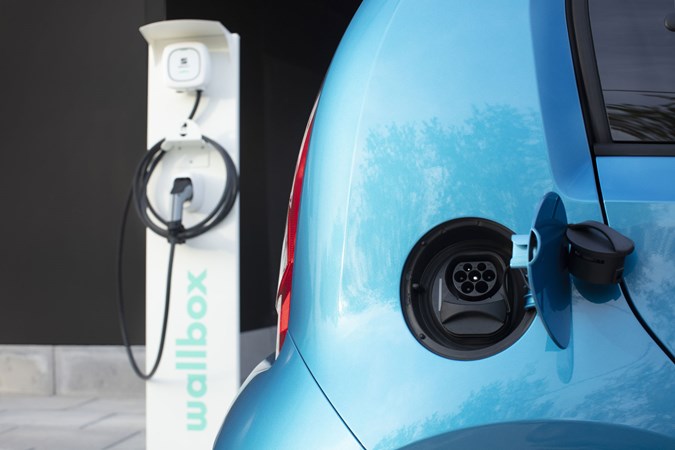
Meanwhile, on a public charge point rated at a rapid 40kW (the maximum the Mii Electric will cope with) SEAT quoted 40 minutes for 80% charge.
This is all pretty standard stuff – and still far longer and less convenient than filling a tank full of petrol. Which is why the best usage case for electric vehicle ownership remains plugging it in overnight and driving no further than a single charge will allow during the day.
That’s not to say that longer journeys and multiple daily charges can’t be done, just that you’re going to need some patience.
Mii Electric battery warranty
The battery was guaranteed by SEAT to maintain at least 70% capacity for up to eight years or 100,000 miles. If it drops below that percentage SEAT will replace it for free. Does a petrol car lose 30% of its driving range over eight years? We doubt it. But that is a minimum figure, and we’d expect most examples of the Mii Electric to be charging up better than that even after so much time.
Further compensation possibly comes from the Mii Electric’s reduced number of moving parts and consumables (including not just oil but brake pads, as the motor takes care of some of the deceleration instead), which means lifetime servicing costs should be lower.
Worth it? You decide.
Ongoing running costs
| Road tax | £195 |
|---|---|
| Insurance group | 12 |
Get an insurance quote with

|
|


